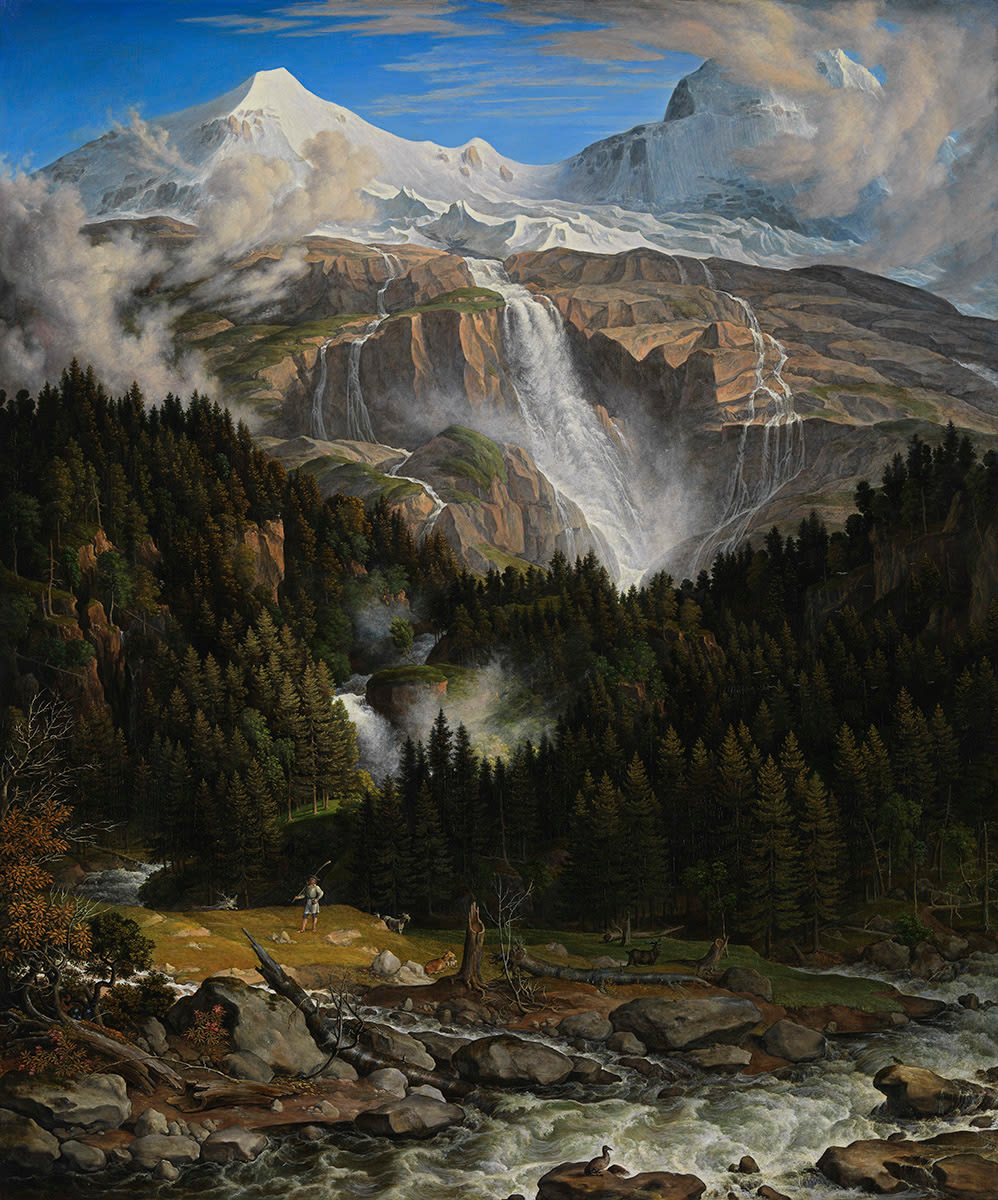Source

Source: Original: Neue Pinakothek, Bavarian State Painting Collections, Munich, Inv.-Nr. WAF 449. Available online at: https://www.sammlung.pinakothek.de/en/artwork/Znxw3rjxXg
During the Romantic era, landscape painting gained increasing respect as a pictorial genre equal in importance to historical and religious painting. Joseph Anton Koch (1786–1839) was heir to a long academic tradition in which even the greatest seventeenth-century landscapes of Nicolas Poussin and Claude Lorrain functioned largely as backdrops to biblical and mythological scenes. Like the Nazarenes, Koch rebelled against the primacy of classical figure drawing in the academy and turned instead to the study of nature. Koch’s particular brand of painting, known as the “heroic” landscape, developed out of a variety of contemporary interests and influences. Among them was the popularity of the Grand Tour, the educated elite’s requisite trip to Italy across the Alps (as documented in Goethe’s Italian Journey), which created great demand for pictures that captured all the grandeur of the passage through the mountains. Koch’s depiction of Schmadribach Falls (in Switzerland) does not, however, play up the dizzying dangers of sublime nature, as the British painter J. W. M. Turner might have done. Instead, through a proliferation of crisp detail, Koch creates something closer to Kant’s mathematical sublime, in which the mind struggles to grasp the infinite. Koch’s landscapes were indebted to a growing scientific interest in geological formations and other contemporary philosophical investigations of natural phenomena. Like the Grimm brothers’ encyclopedic study of the folk and fairy tale, Koch’s heroic landscape unites both classical rigor and the Romantic quest to renew art through subjects and forms that are at once universal and rooted in a specific time and place.

Source: Original: Neue Pinakothek, Bavarian State Painting Collections, Munich, Inv.-Nr. WAF 449. Available online at: https://www.sammlung.pinakothek.de/en/artwork/Znxw3rjxXg
Bayerische Staatsgemäldesammlungen - Neue Pinakothek, Munich